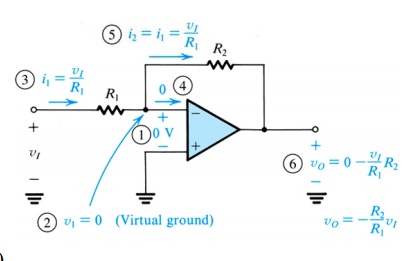Junus2012
Advanced Member level 5
Basic question
for the inverting op-amp connection shown. how the op-amp assures that the input viltage difference between its terminals are zero when we apply the negative feedback. I know the Op-amp should have very high gain but still i need a reason to explain why not the inverting terminal can have a different value from the non inverting at the time when we are changing the input signal ?? .

The question is also valid for another negative feedback configurations
Thank you all
for the inverting op-amp connection shown. how the op-amp assures that the input viltage difference between its terminals are zero when we apply the negative feedback. I know the Op-amp should have very high gain but still i need a reason to explain why not the inverting terminal can have a different value from the non inverting at the time when we are changing the input signal ?? .

The question is also valid for another negative feedback configurations
Thank you all
Last edited: